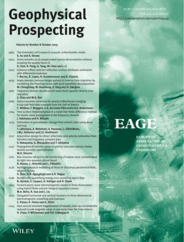
Full text loading...
 , Alireza Malehmir2, Antti Pasanen3, Leo Kärkkäinen4,5, Janne M.J. Huttunen4, Jan S. Hesthaven6
, Alireza Malehmir2, Antti Pasanen3, Leo Kärkkäinen4,5, Janne M.J. Huttunen4, Jan S. Hesthaven6
Convolutional neural networks can provide a potential framework to characterize groundwater storage from seismic data. Estimation of key components, such as the amount of groundwater stored in an aquifer and delineate water table level, from active‐source seismic data are performed in this study. The data to train, validate and test the neural networks are obtained by solving wave propagation in a coupled poroviscoelastic–elastic media. A discontinuous Galerkin method is applied to model wave propagation, whereas a deep convolutional neural network is used for the parameter estimation problem. In the numerical experiment, the primary unknowns estimated are the amount of stored groundwater and water table level, while the remaining parameters, assumed to be of less of interest, are marginalized in the convolutional neural network‐based solution. Results, obtained through synthetic data, illustrate the potential of deep learning methods to extract additional aquifer information from seismic data, which otherwise would be impossible based on a set of reflection seismic sections or velocity tomograms.

Article metrics loading...

Full text loading...
References


Data & Media loading...

